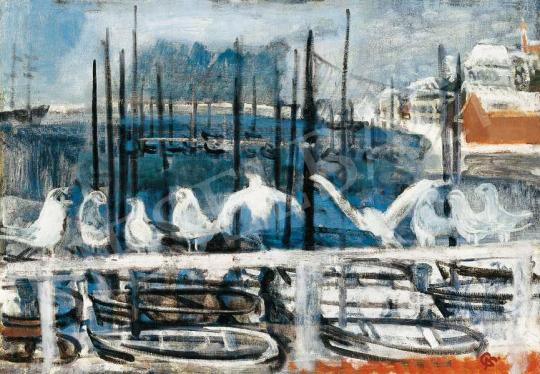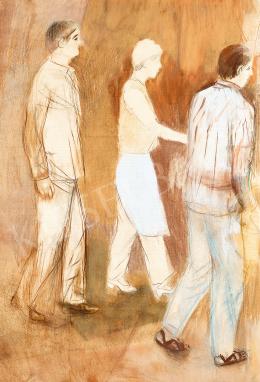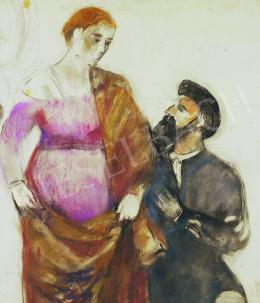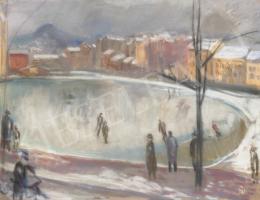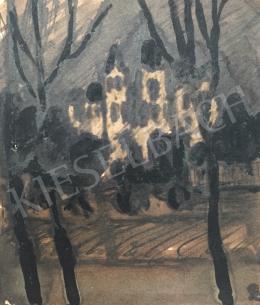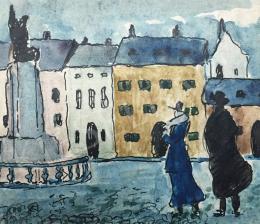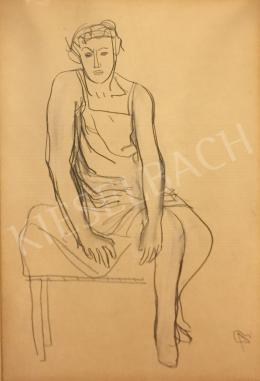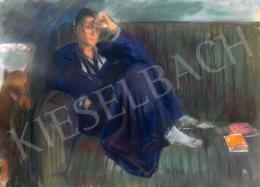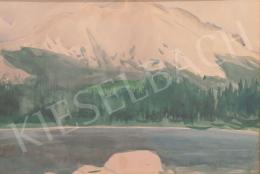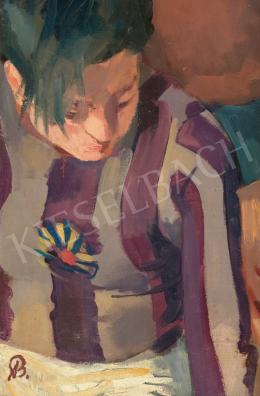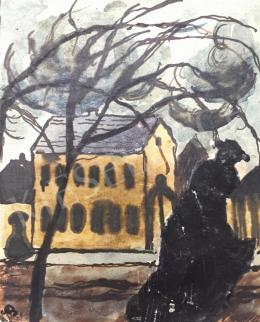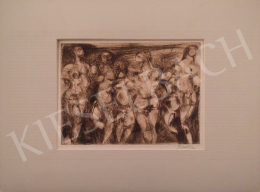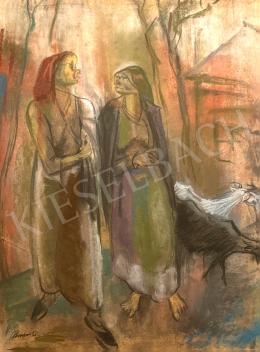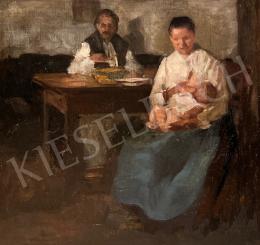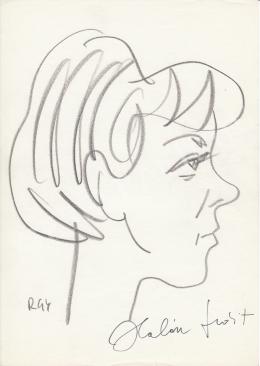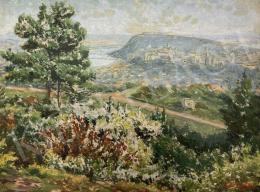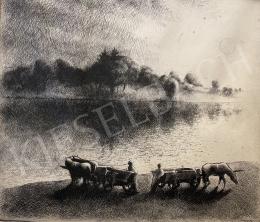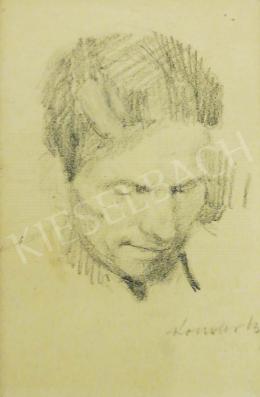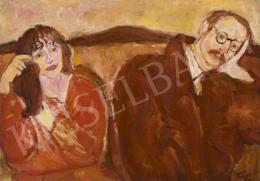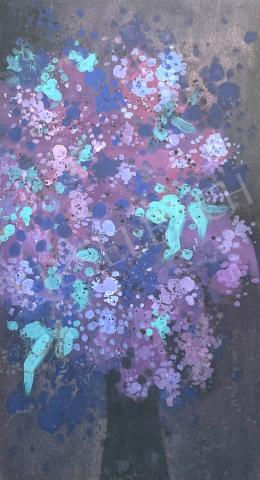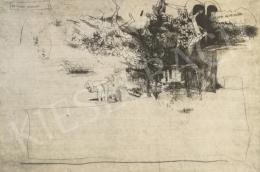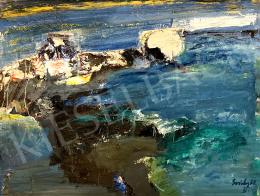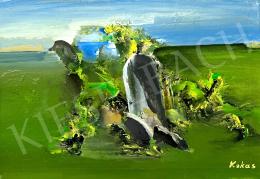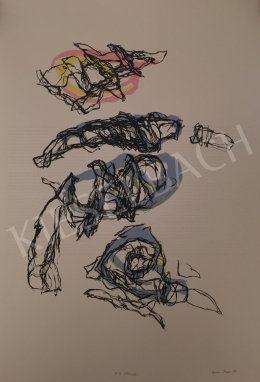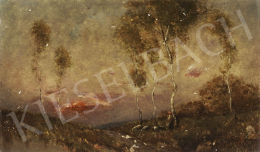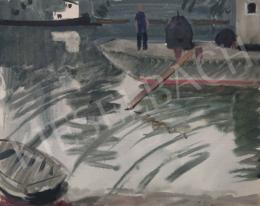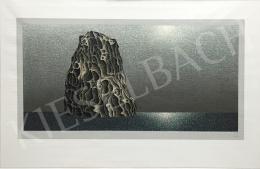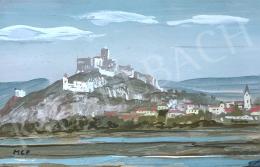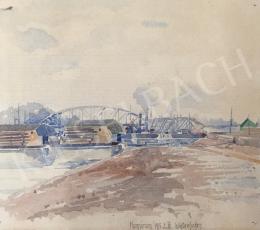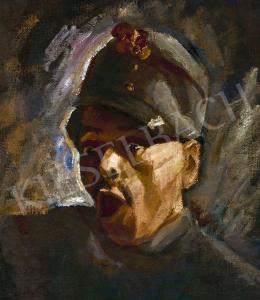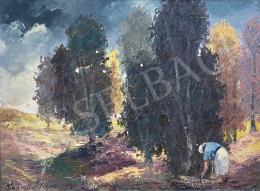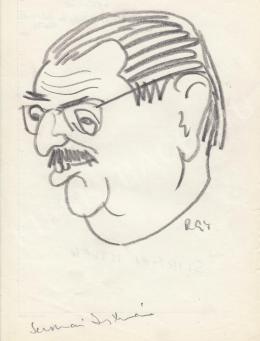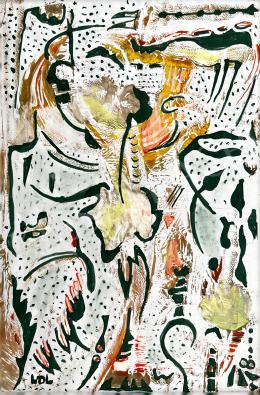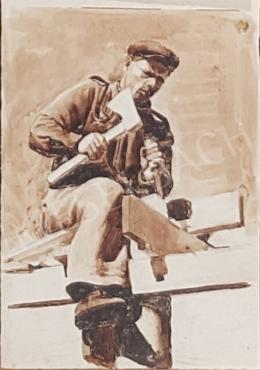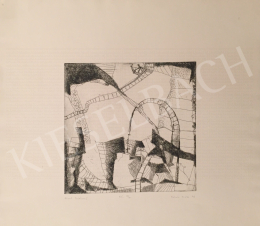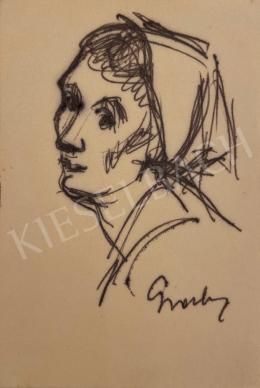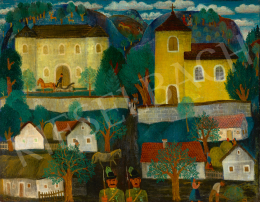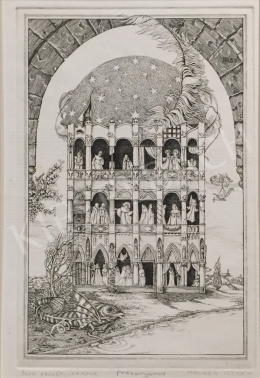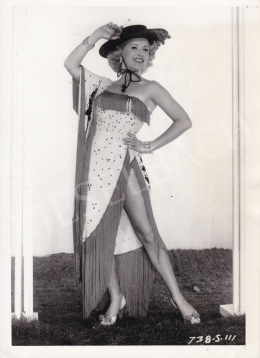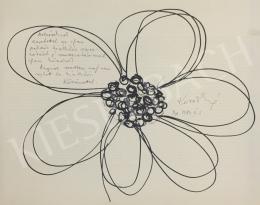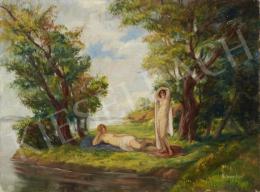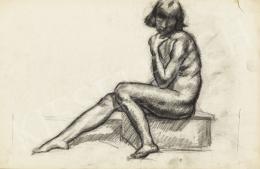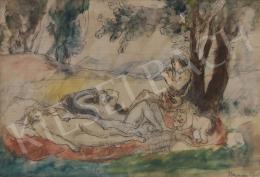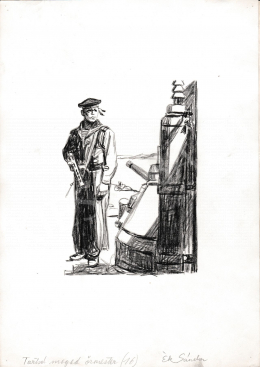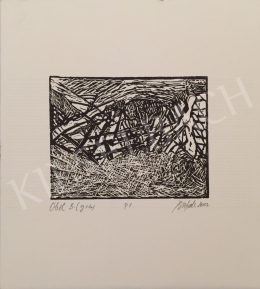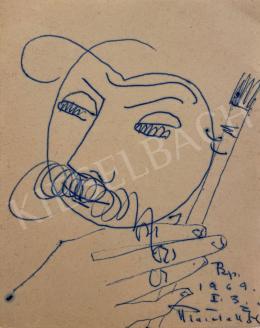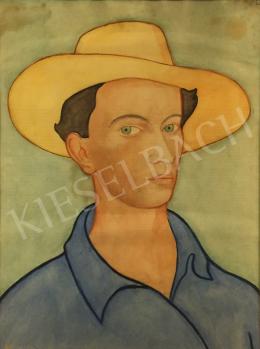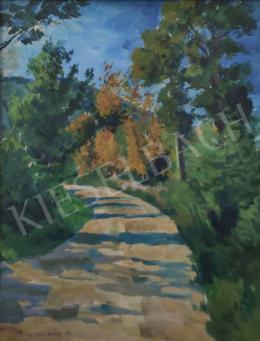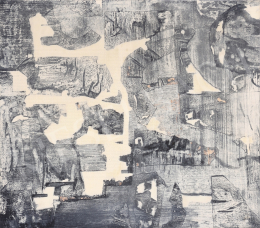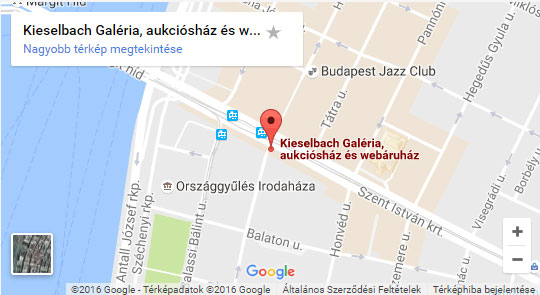BIBLIOGRAPHY:
Rózsa Gyula: Töredékek. Mozgó Világ (magazine), April 2006.
Barki Gergely: Berény Róbert, az "apprenti fauve". In: Magyar Vadak Párizstól Nagybányáig 1904-1914. Magyar Nemzeti Galéria, Budapest, 2006, p. 227.
Barki, Gergely: Róbert Berény, the "Apprenti fauve". In: Hungarian Fauves from Paris to Nagybánya 1904-1914. Hungarian National Gallery, Budapest, 2006, p. 159.
REPRODUCED:
Barki Gergely: Berény Róbert, az "apprenti fauve". In: Magyar Vadak Párizstól Nagybányáig 1904-1914. Magyar Nemzeti Galéria, Budapest, 2006, p. 227.
Barki, Gergely: Róbert Berény, the "Apprenti fauve". In: Hungarian Fauves from Paris to Nagybánya 1904-1914. Hungarian National Gallery, Budapest, 2006, p. 159.
EXHIBITED:
- Salon des Indépendants (Société des Artistes Indépendants), 23eme Exposition. Grandes Serres del'Alma et des Invalides, au Cours-la-Reine. Párizs, 20 March - 30. April 1907
(Lot Number 365 in the exhibition catalogue with the title Nature morte, 4th item among the artworks of Berény, number 4 on the back refers to this)
- (Presumably exhibited) A Nyolcak második kiállítása (the Eights' second exhibition), Budapest, Nemzeti Szalon, 1911. April 29. - May 16.
- Avantgárd a gangon [Collection of Horváth Béla]. Kieselbach Galéria, Budapest, 2006. március 8. - március 14.
- Képzőművészeti ritkaságok. Festmények, rajzok Horváth Béla (1930-1995) gyűjteményéből. Városi Művészeti Múzeum, Győr, 2006. March 18. - 2006. May 31.
- Magyar Vadak Párizstól Nagybányáig 1904-1914. Magyar Nemzeti Galéria, Budapest, 2006. August (It is not present among the exhibited artworks in the catalogue of the exhibition, it arrived at the exhibition in August 2006)
Berény the apprenti fauve - the "wild genious" on the turn of 1906-1907
It seems that the Kieselbach Gallery attracts as magnet the works through which a totally unknown early Berény ouvre is outlined. In the last one and a half years three Berény paintings have been up for auction only from the yield of year 1906, which would have been published as a whole page reproduction in a two volumes giant entreprise of the owner of the Gallery, if they had been found earlier. After this, they cannot be missing from the summaries of modern Hungarian painting. In the last 5 years 7 Berény fauve paintings have been up for auction, among them three have been introduced for the first time in the Salon des Indépendants organised in Paris in 1907 and 1908. Through the appearance of these works, we have got close to be able to reconstuct the whole role of the painter in exhibitions in Paris.
This time a painting changes hands again which debuted in Paris exactly 100 years ago. The Salon de Indépendants, the Independents' Salon of 1907, is of great importance also in the history of fauvisme. Louis Vauxcelles, journalist, godfather of the company of Matisse, Derain, Vlaminck, Dufy used the expression fauve for the first time as a group name already consciously in this exhibition. The exhibition criticism of Vauxcelles published in Gil Blas enumerates the artists he considered as the representatives of the new tendency. The journalist who altered variedly the fauve nomenclature enumerates two Hungarian among the members of the group: Béla Czóbel entitled as fauve inculte, uneducated fauve and Berény entitled apprenti fauve, apprentice. Presumably he meant his young age by this, as Berény had just completed his 20th year when he sent six of his paintings -among them the Still life up for auction now- to the Independents.
The contemporary Hungarian press also reported on the success of Berény. The reporter of Pesti Napló wrote: "Among the Hungarian, Róbert Berény painted a very good portrait of Bertalan Pór, two of his landscapes is of Monaco, but the colours and the whole feeling is Hungarian, his combing woman interesting in character and comprehension." The writer of the article did not mention the Still-life, though the attribute 'Hungarian-like' can be applied for this painting as well, we know that a still-life was present in the exhibition catalogue under the name of Berény, and we can be assured that this is the same as the artwork in question. The autograpic caption on the back of the painting refers to this, as we can meet similar ones on two other identifiable paintings of the exhibition, on the Pór portrait from 1907 and on the Woman in Red Gown, also from 1907 and on the Nude of an Italian Girl sent for the Salon of Independents' one year later and the composition Ball Players. The numbering painted on the back side by Berény is always analogue with the numbers of the catalogue. The painter certified his works sent in with his signo on the back side of his works and the French titles appearing here were published in the catalogues.
The exhibition of the Independents' producing regular disturbances attracted the curious people, thus the artists as well. Many of the Hungarian painters who did not exhibit there, also visited the exhibition primarily for being informed about new tendencies. István Csók who was working in Paris that time, who took note of the paintings of the young painter was among them. In his letter addressed to Lajos Fülep -perhaps being driven by a bit of jealousy- addressed Berény as a fade copier of Cézanne and Valloton (sic!). It is relevant in his ironic remark that he mentioned Cézanne who was considered an ideal that time by only a few people. Before 1906, Matisse was practically the only one who discovered the guiding legacy of the just deceased master from Aix.
The Still-life of Berény is also from 1906, as it can be seen from the inscription. It was painted when he was 19. Related to Berény, this year is remembered with great respect and laudation for a big genious. Dezső Orbán lamented after even long decades that he was so impressed by the superior talent of Berény that he never recovered from his feeling of inferiority caused by him. In an article published in an Australian magazine he dedicated a separate chapter for detailing that Berény took him to the meetings of Gertrude Stein, where he can get acquainted with the most progressive artists of the era, Matisse, Picasso etc. György Bölöni, the critic managing the later Eights got acquainted with Berény in Paris also in 1906 in the art studio house under No 9, rue Campagne Premiére, as his neighbour. Half a century later he remembered: "On the ground floor of the art studio house worked Róbert Berény in an atelier. He was the youngest. He had a bright intelligence loving to philosophize and thinking on mathematical problems and technical innovations. This passion has been shown in the construction of his paintings as well.". Max Weber, later apprentice of Matisse, the most relevant pioneer of American modernism lived in this house. He wrote about Berény as follows: "An attraction for a lifetime and the precious memory of Róbert Berény have been planted in me in the spring of 1906. [
] For his 20 years he gave the impression of maturity and he understood such esthetical principles which were supposed to be understood by a person much older than him. His speech was enjoyable and entertaining, dogmatic, purely expert-like and interesting and humorous the same time. [
]He understood and highly respected Cézanne and Touluose-Lautrec and the primitives. He liked music and picking up his violin in the most unexpected moments he improvised with an Oriental passion with a sound flowing widely with soft resonance. His own compositions or the notes of the classics were always on his table. He avoided the pain of privation and renouncement. He lived comfortably and ususally dressed well. His parents were rich and cared for him. He got money and food in regular intervals from home, Budapest. He usually shared these on the occasion of celabrations organised in his art studio with his Hungarian friends who were less lucky. I was always welcomed."
That was the year that brought the most diversified results in the life of the young Berény. Almost every painting of 1906 is considered important from the Self-portrait with Straw Hat to the Woman Lying on the Sofa. Each painting is a search for a new direction which was apparently immediately abandoned when taking a new canvas, however these works are final declarations which emerged with such a determinance and self confidence under his brilliantly directed brush.
The Hungarian Cézanne?
In 1911, when a real Berény retrospective with 49 of his paintings could be seen in the exhibition of the Eights, György Bölöni exclaimed in the Aurora cultural magazine: There is a serious, conscious, sensitive conaisseur of Cézanne, a Hungarian conaisseur. The early date of Still-life makes the brilliant performance of Berény even more astonishing. The 19 years old painter was not only an "up to date" artist even compared with Matisse or Derain, but in a certain measure he even go beyond them. Starting off from Cézanne, contrary to them he made his way elsewhere, a bit similar to Picasso, but even ahead of him, he looked for the essence of plasticity of forms. It can already be perceived on Still-life that he is interested in such space problems on the resolution of which he will be working until the beginning of the thirties. He tried to emphasize the construction in its appearance in a totally unique way, with a rich scale of varied painter and technical elements. Similarly to Cézanne, he uses interruption, but the polemy of completeness/incompleteness does not turn up, these stains left empty turn out to be exciting, decorative pauses, silence sections reflecting his musical culture, without which the composition is not whole and homogenous. The superlatives here are appropriate, this is not the arbitrariness of the monograph writer. I take the article of Gyula Rózsa of last year as an evidence, where the virtues of the artwork in question is detailed lenghtily: "Berény, the then and after diabolically impatient, talentedly impatient Róbert Berény paints his Still-life in 1906 that every novelty that he saw in Paris can be read of it. The view from above of the fruit bowl is of Cézanne, the apples massed heavy and hitted plastic as well, but the Hungarian-like embroidery, performed savoury of the small table cloth is so loudly, obliviously red and green and blue that even Matisse could not paint more free then, in that year. The table cloth, the plastically majestic white table cloth with serious pleats and shadows also had guidance from the master of Aix, but the painting is homogenously, happily and victoriously bold, almost perfect."
Yes, Berény is primarily was nourished by Cézanne, but went his own way bravely, we cannot talk about plagiarism. In Paris, he become the former of a new direction on an equal rank with the pioneers of the French modernism. One of his closest friends, fellow artist, Anna Lesznai saw the situation of Berény in the right way: "It is my personal feeling, though you know Pista (István, Varró, sociologist), how I love Hungary, that Róbert would reach longer if he would have been born in Paris."
"Bakony" on a table of Paris
Though Berény cannot be named as a typical Hungarian painter, especially in this period, it cannot be left aside related to our artwork in question a very emphasized motive, the Hungarian-like embroidered table cloth placed on the table of the Parisien atelier and the pillows in the background reminding of Transsylvania. Decorative embroideries, bed cloths, pillows, table cloths remarkably often emerge in the artworks of Berény painted around 1905-1907, but their Hungarian character never dominates, because they are not Hungarian embroideries or this feature is not striking. Berény exhibited a whole collection of embroideries in the exhibition of the Eights in 1912 a few years later, but the motives of the handcrafts designed by him is absolutely different from the treasure of motives of the Hungarian popular art. The visualising of embrioderies, handcrafts similar to the those present on Still-life often occurs in case of their contemporaries when presenting the world of contemporary bourgeois enterieurs for exemple to stay within the circle of the fauves- in case of Béla Czóbel, Sándor Ziffer, or István Csók, who furnished his Parisien art studio with popular art objects. It is charateristic that Csók besides many similar themed canvas painted his canvas entitled Box with Tulips (1910, Hungarian National Gallery) in Paris, related to which he once noticed that he does not need Matisse as a source of inspiration, as he has the box with tulips within reach.
In case of the Still-life by Berény the choice of motives is not accidental because the emphasizing of Hungarian character in his case is rather unusual. Róbert Berény belonged to the generation of painters orienting in Paris, who got to know the poetry of Ady in the French capital that year. The thought of "Paris is my Bakony" characterizes accurately the ars poetica of Berény. Berény was familiar with the folklore activity of Béla Bartók from home, Budapest and it shows their close friendship that three years later they spent Christmas Eve together. But in case of Berény we cannot talk about folklore romanticism. In summary the choice of motive of Still-life and the method of expression in my reading is a self-portrait-like 'firm as a rock' declaration: because he places the hardly gravitating apples on the embroidered table cloth, the Hungarian canvas he states that he is the Hungarian Cézanne, un Cézanne d'Orient.
The career of Still-life
Only some of us could see the artwork hidden for a long time even from the closest professional circles, before it was exhibited again in the exhibition last year entitled Avantgarde on the outside corridor in the exhibition organised in Gallery Kieselbach. The exhibition presenting the collection of Béla Horváth moved afterwords to Győr, where the poster inviting visitors -recognising the relevance of the artwork- was decorated with the Still- life of Berény. Last year we reproduced for the first time the Still-life of Berény of 1906 in the catalogue of the Exhibition the Hungarian fauves organised in the Hungarian National Gallery, but the work did not get a catalogue number. Three of Berény's identified paintings from the Salon des Indépendents of 1907 arrived in the beginning of August, this way they were together almost for a month in the exhibition with prolonged opening hours. I hope that the new owner of the Still-life will borrow proudly his new acquision for the Fauves Hongrois tour to be organised at three French sites, as our French co-curators elected this work to be exhibited. I also hope that till then other three not yet identified Berény paintings exhibited in 1907 will be found. Perhaps -continuing the tendency- right here, on the auctions of the Kieselbach Gallery.
Gergely Barki






